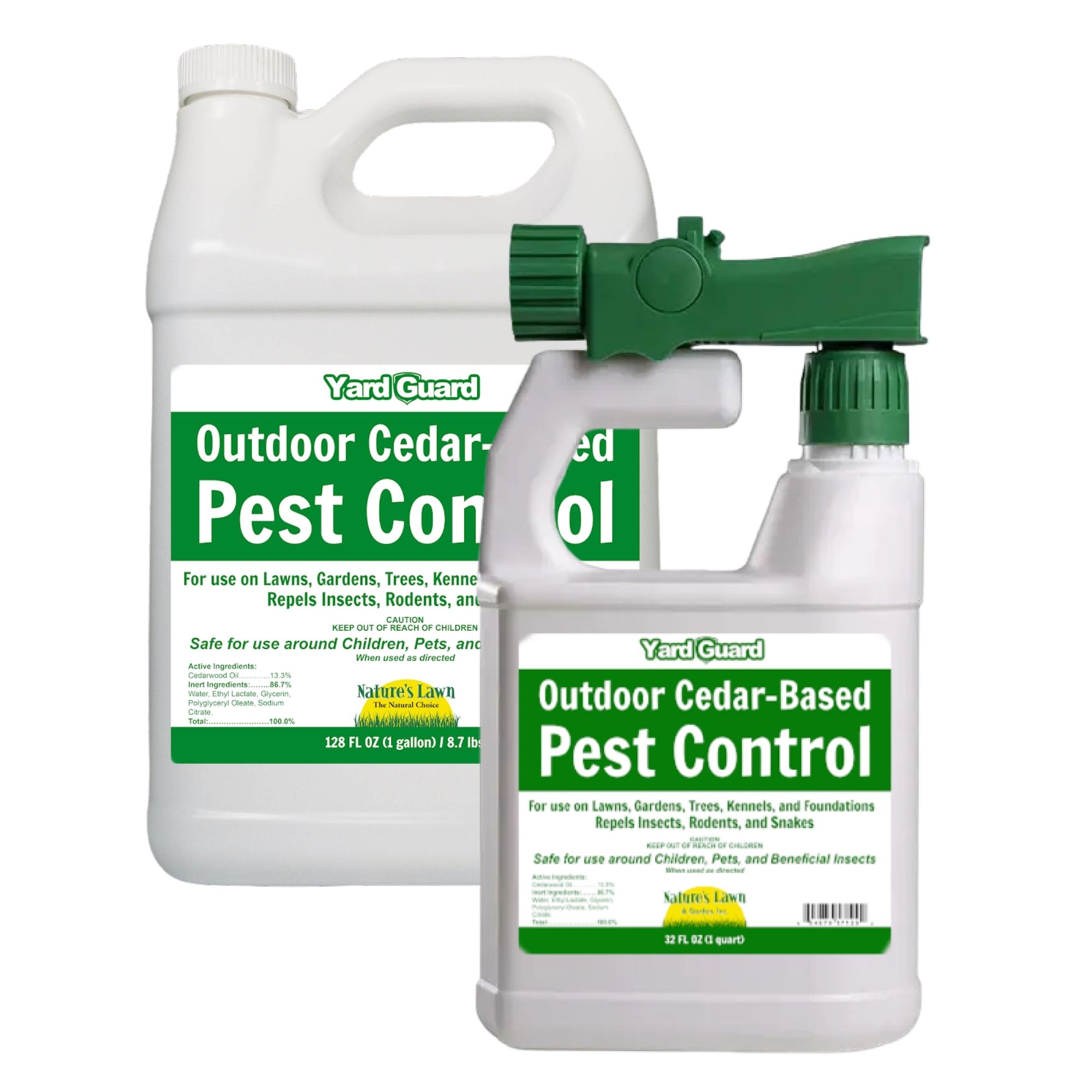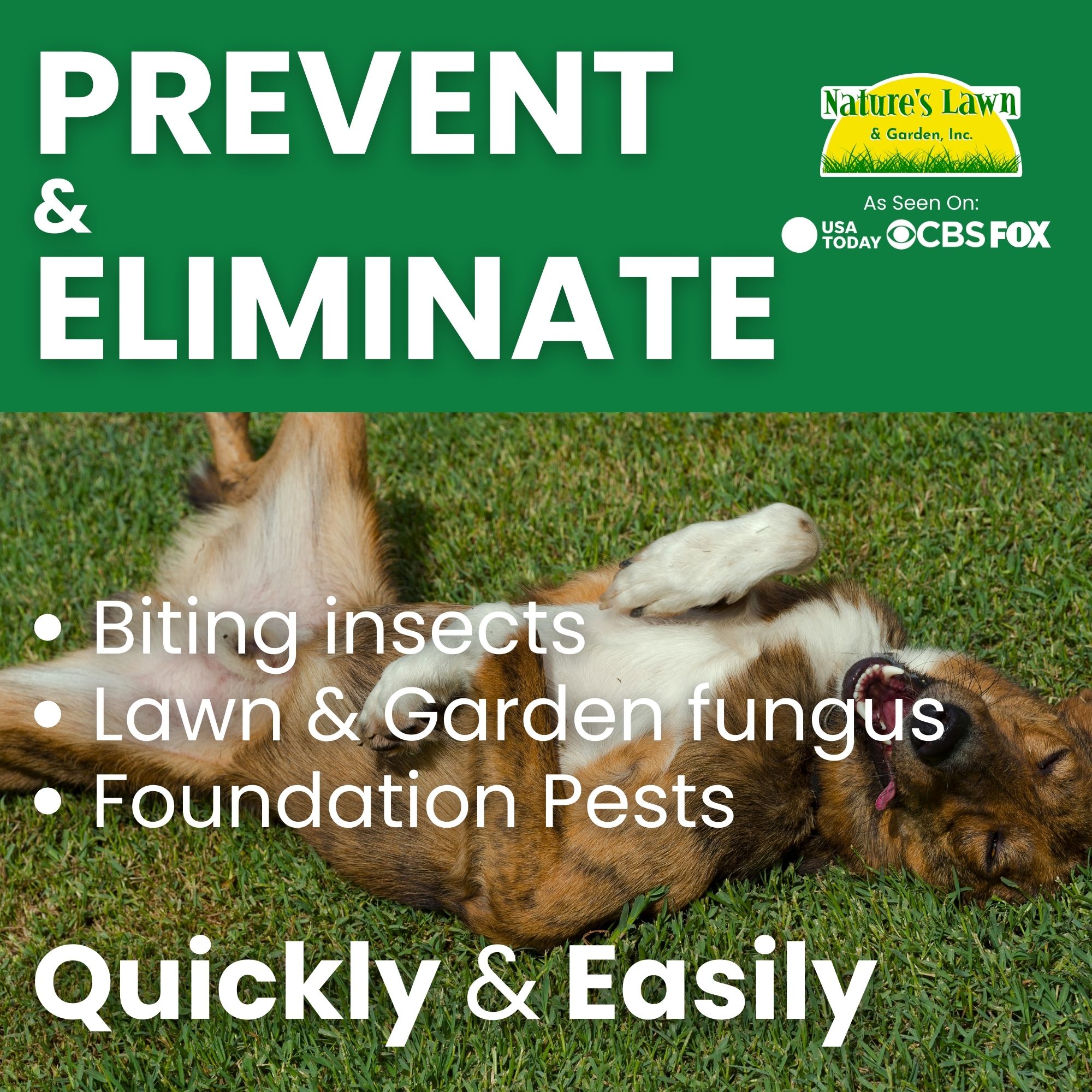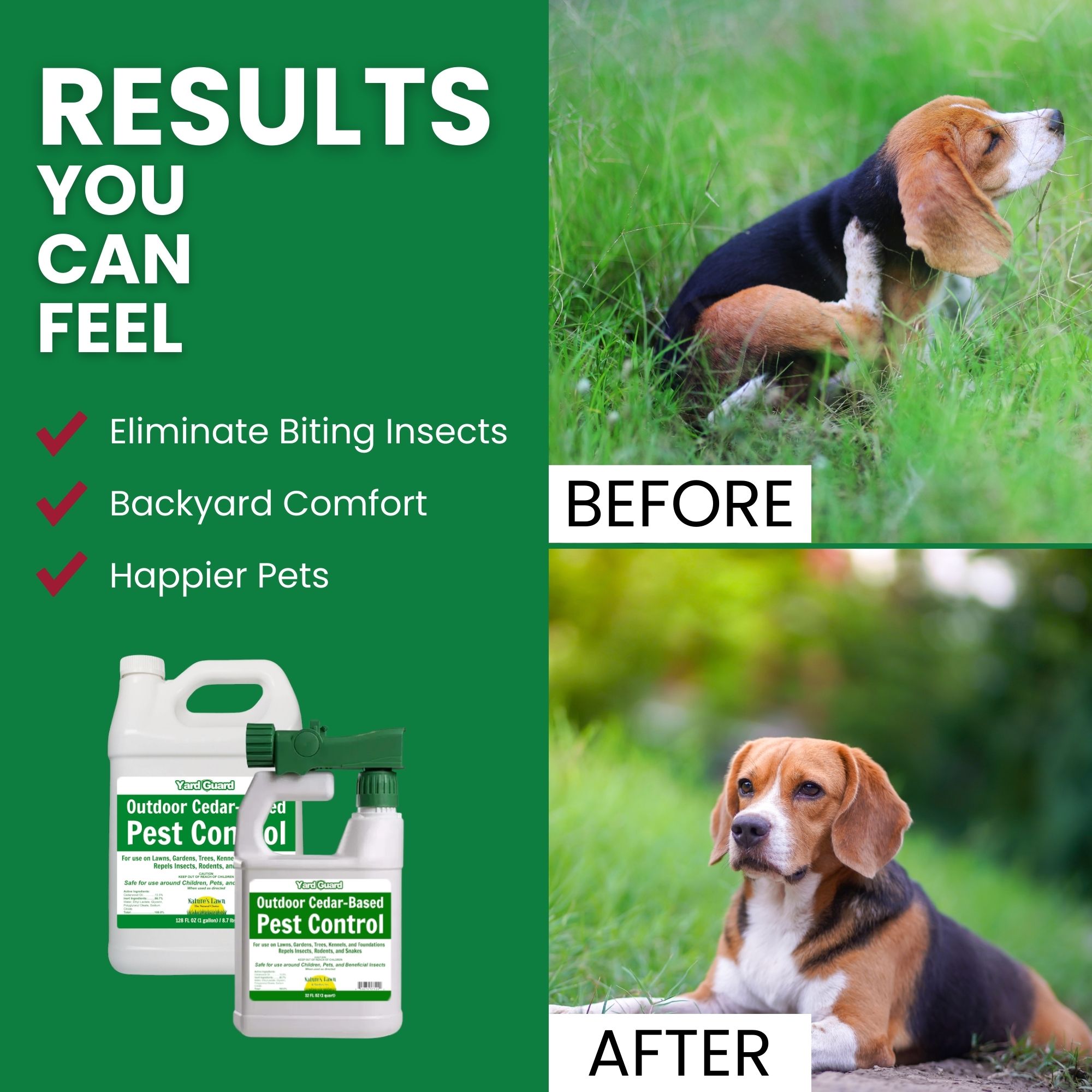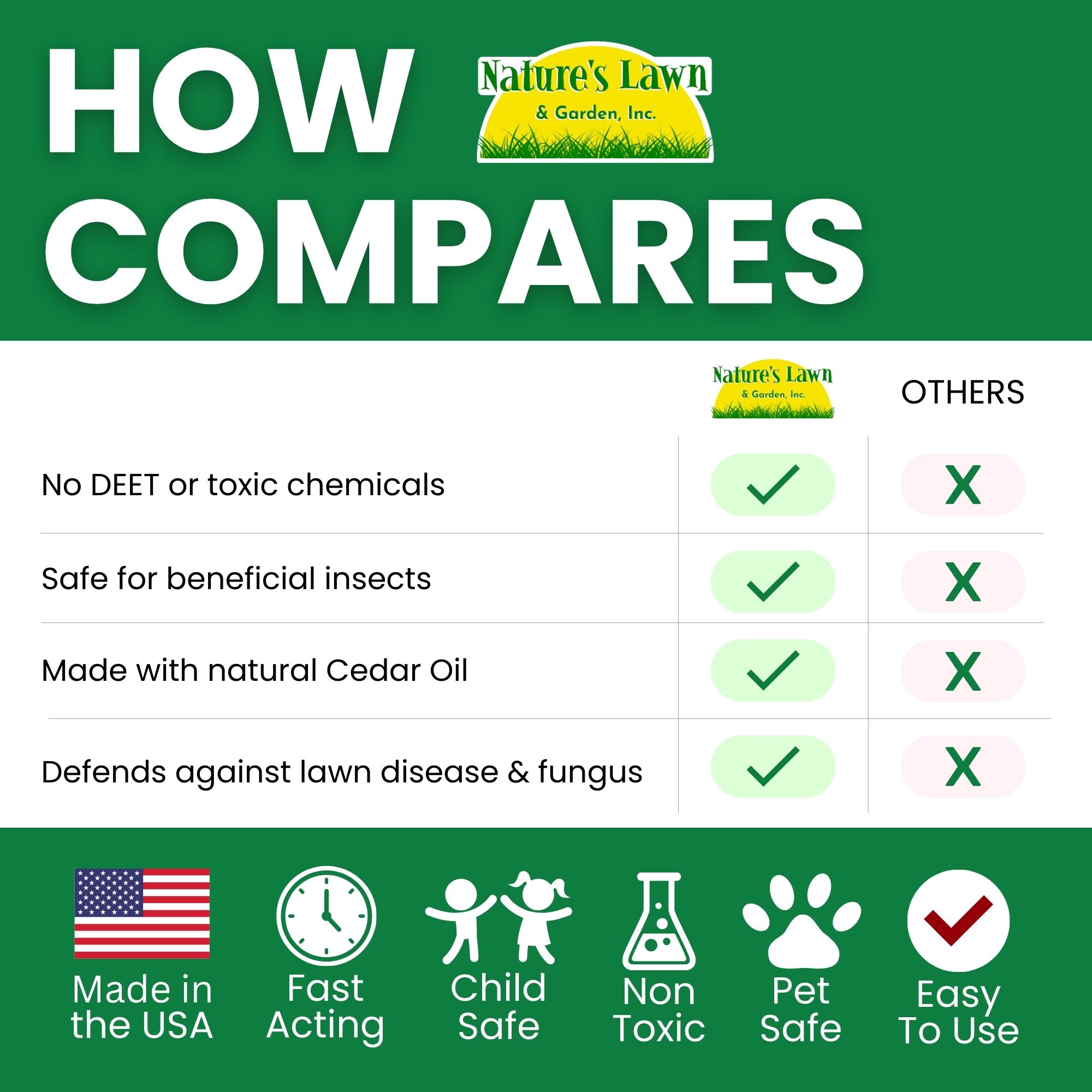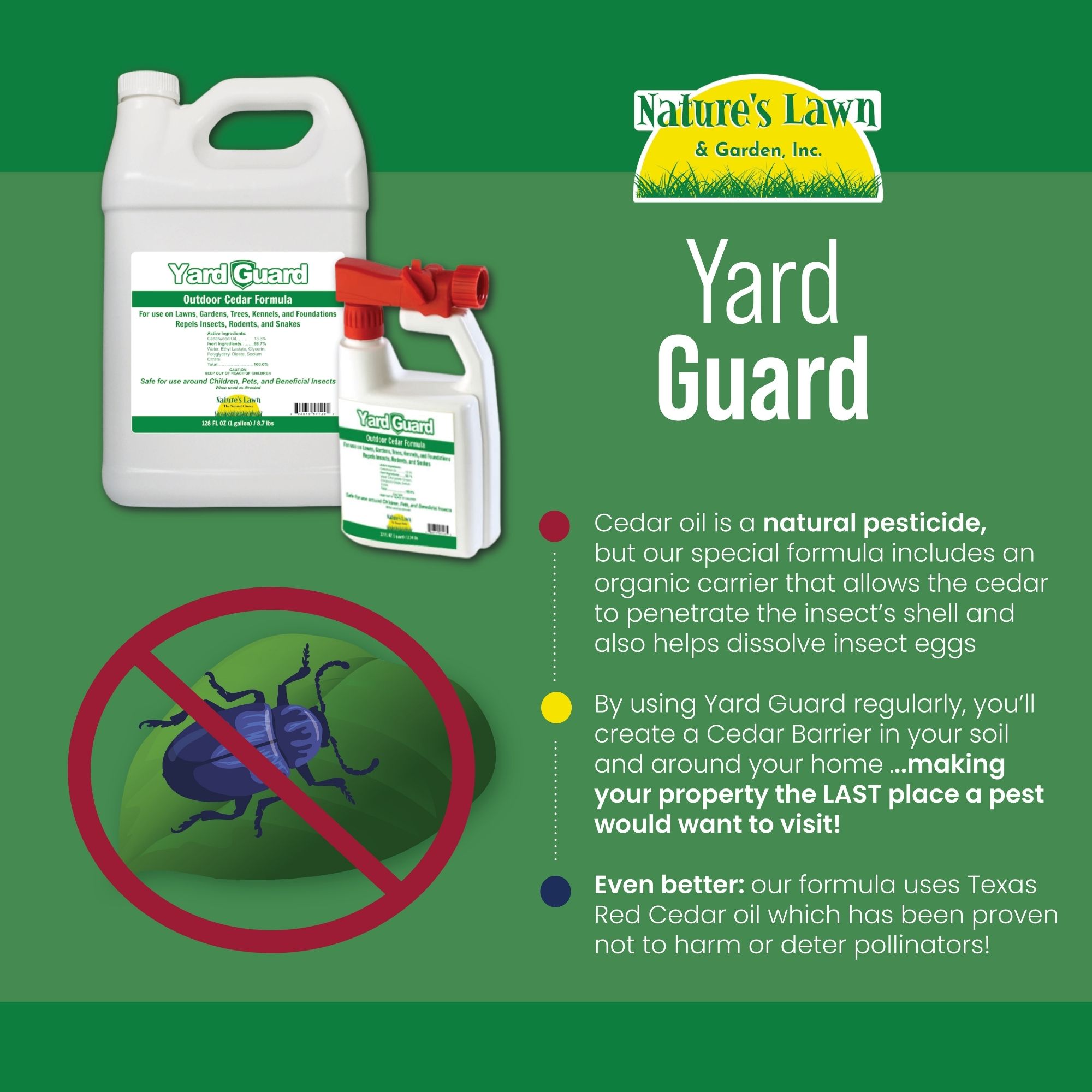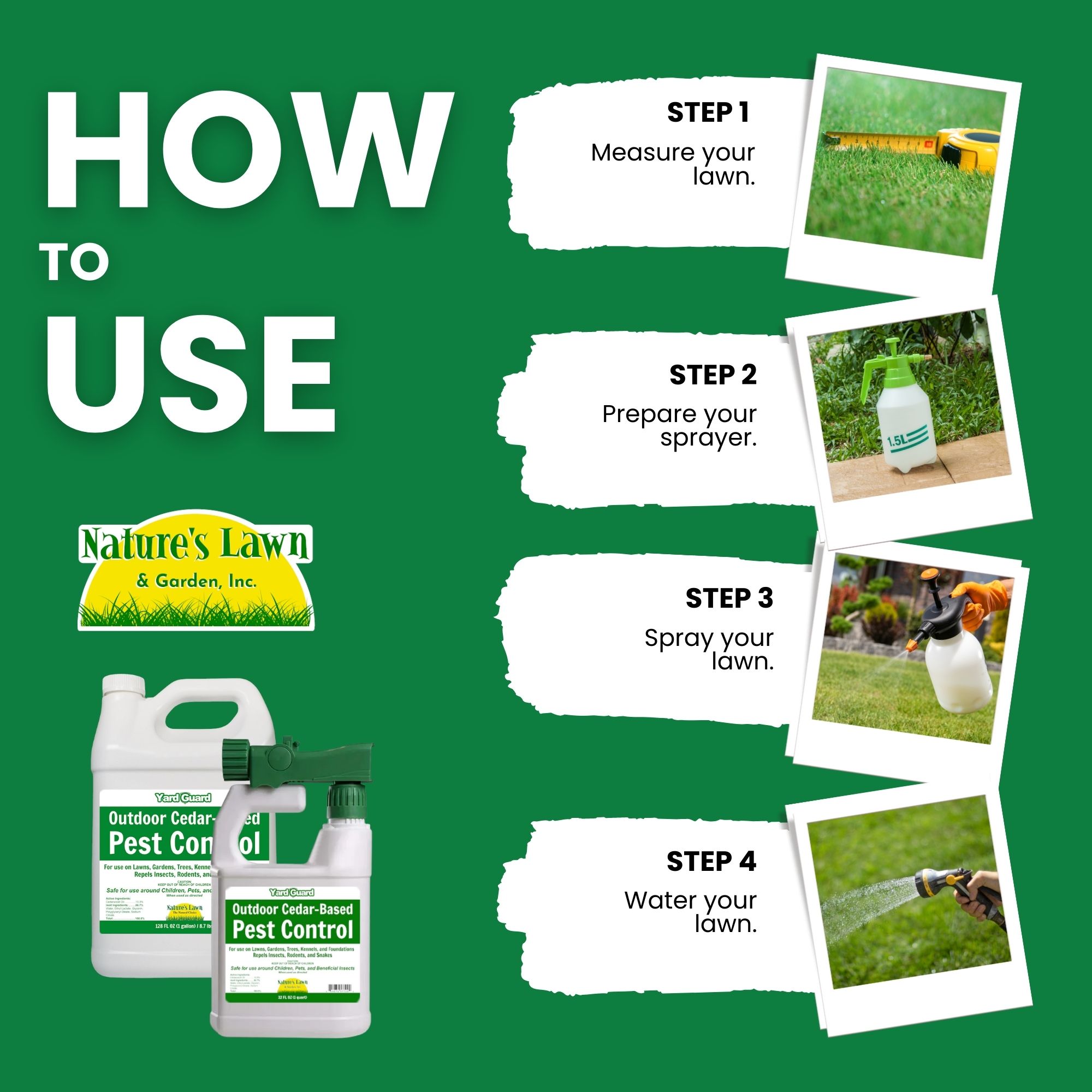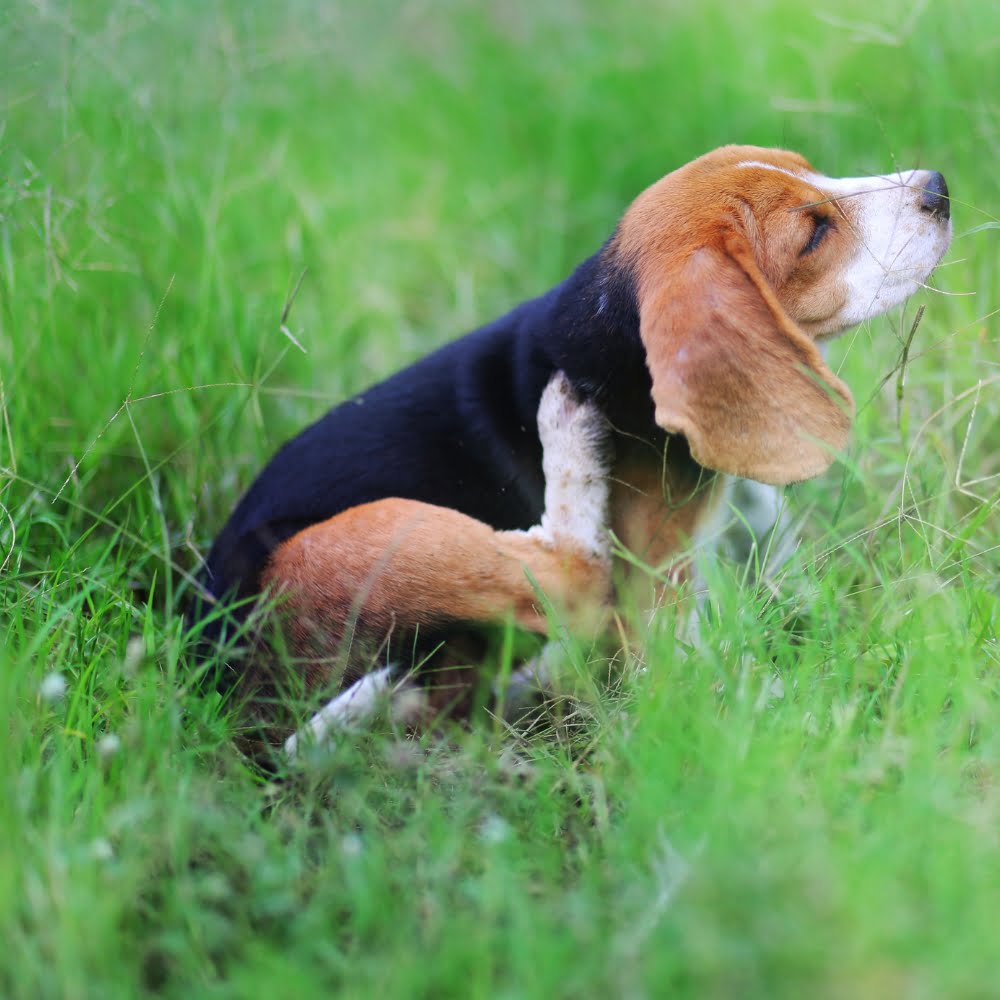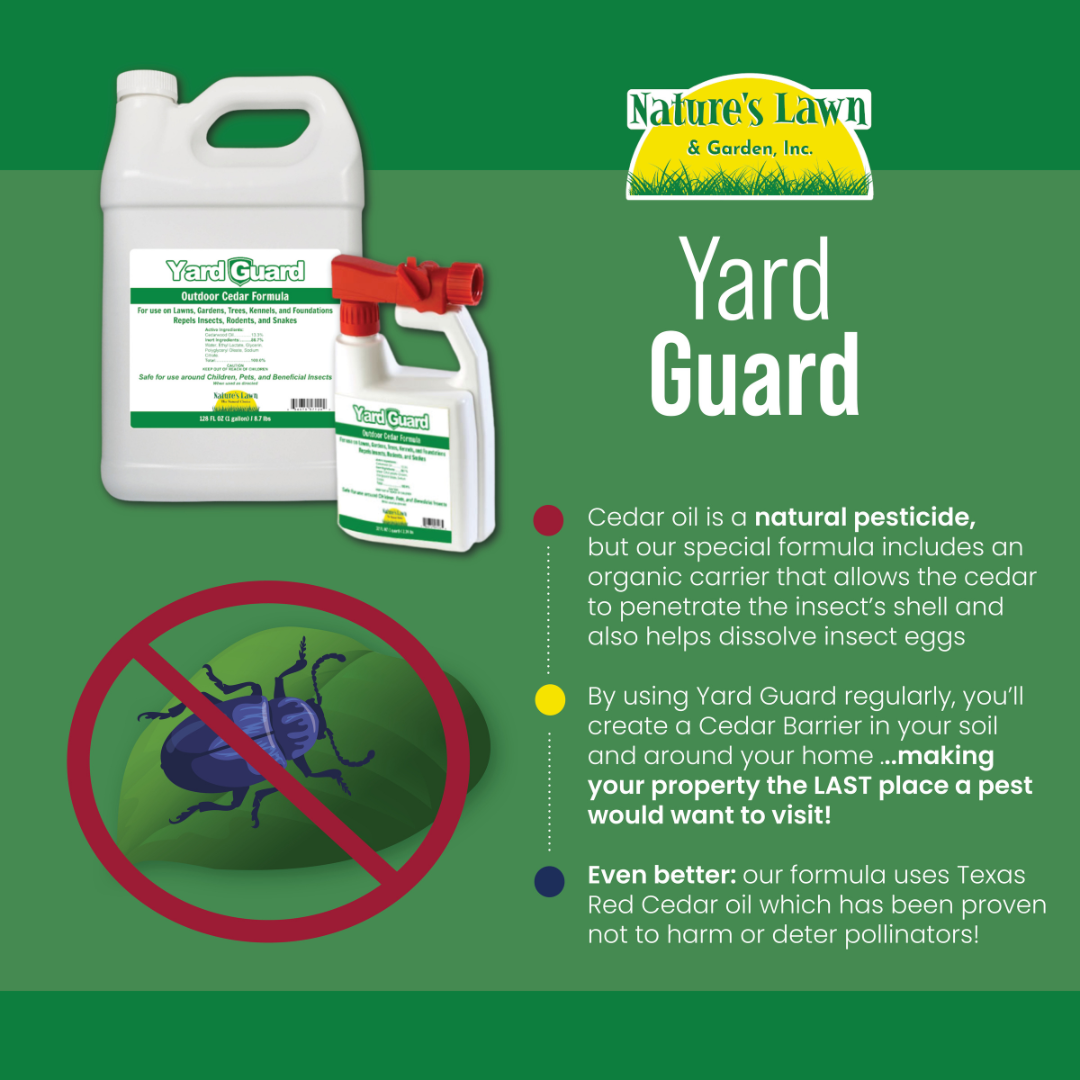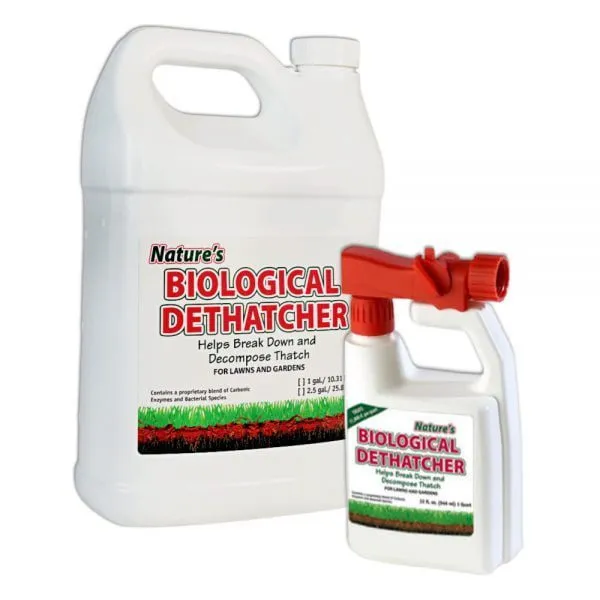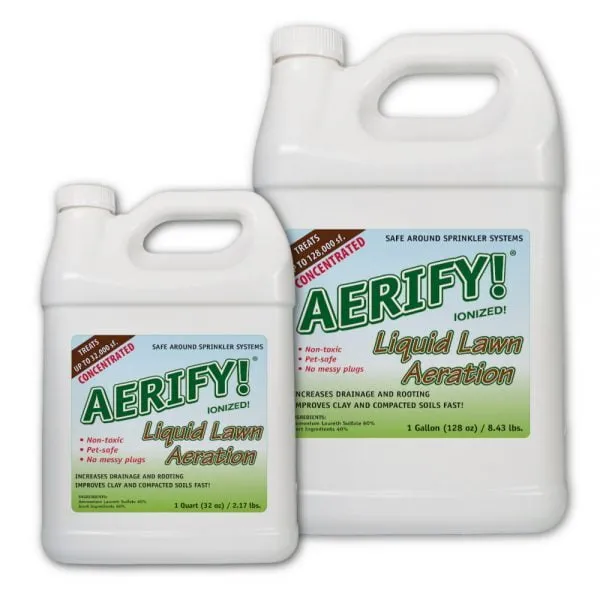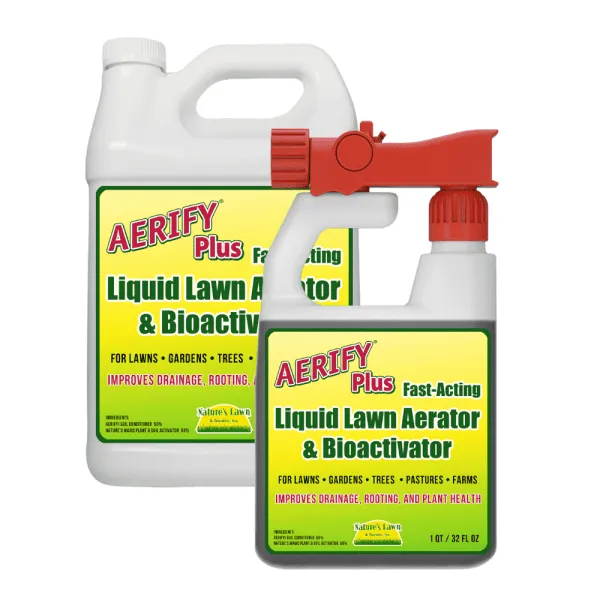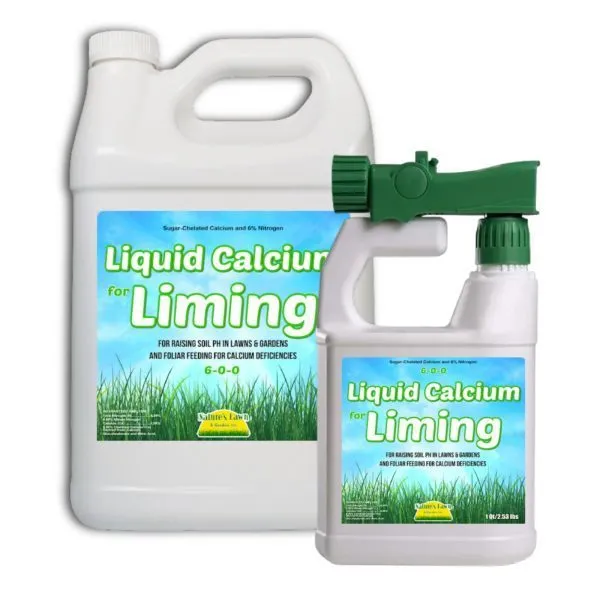For General Outdoor Use:
1 quart covers up to 5,000 square feet.
The best way to protect your property from unwanted pests is to build up a cedar presence in the whole yard before the problem begins. We recommend starting applications as soon as the insect population wakes up in your area after winter.
- If using our hose-end sprayer, attach the nozzle to your garden hose. If using your own adjustable hose-end sprayer, set it to 1-2 oz Yard Guard per gallon of water. Stir or gently shake the bottle to handle any possible settling that might have occurred.
- Turn Dial To On and spray everywhere you want safe, natural protection from insects. We recommend starting with the foundation walls and working your way out. This is a non-staining formula so be sure to spray it over (and under, in some cases) the deck, patio, walkways and outdoor furniture. It can even be sprayed on screens. It can be sprayed right on barn or stable walls and over animal bedding too (we don’t recommend using around chickens).
- Treat the lawn and garden beds including bushes and trees. For very large trees soak at least the first 8 ft of trunk.
- Soak any areas that have leaves or mulch on them as insects will hide or over-winter in these area. You will also want to treat any standing water, too, to help with mosquito control.
- You need to soak the whole yard really, really well the first time. You should easily be able to get 3000-5000 sf coverage from the 1 quart bottle.
- Spray the yard again once a week for the following 2 weeks. These repeat spraying will create a cedar barrier in the soil that will repel any unwanted insects from the area.
- After you have sprayed 3 times you can continue spraying every 4 weeks.This should keep most insects and snakes from setting up home in your yard-especially in the soil. If you see any, simply apply again.
For Existing Infestations:
Simply apply more product over less area:
- For above ground insects, use 1 qt of yard guard for up to 2500 sf
- For sub-surface insects like grubs apply 1 quart per every 1000 sf
- For Ant Mounds, drench the area outside of the mound first and then work your way in to the mound itself.
For Treating Smaller Areas:
For smaller areas, we recommend using a pump or trigger sprayer instead of the hose-end sprayer. Stir or gently shake the bottle to handle any possible settling that might have occurred, then mix 12 oz (1.5 cups) of Yard Guard per gallon of water.
This can be sprayed on garden plants, indoor plants, indoor insects, and even on pets. For dogs, just wet their fur and rub in well. Fleas and mites hate it, and dogs often find it soothing for hot spots. Keep away from their eyes, and rinse with water quickly if it should get on them. Spraying the dog before a walk around the neighborhood or even a walk in the woods will repel any lurking fleas or ticks.
For cats, you can spray on fur if they are docile enough. But might have better luck spraying on your hands or a towel and then rubbing it in.
TIP: Cedar loves water. If you can spray your yard after watering, or after a rain, the cedar will create a better barrier to insects.
Note: During hot and dry times of the year spray in the early morning or evening preferably when temps are under 80 degrees and do not spray plants that are wilted or under drought stress. Do not spray around exotic birds or rodent pets.
For flying insects like Japanese Beetles that come in from other yards to nibble on your plants, treat the foliage again as soon as you notice them. A good rain or watering will wash the product off the leaves so reapply as needed. You cannot over-apply this product. If mosquitoes are an issue, the aroma of cedar will confuse them, so spray lightly as often as needed to keep them away.
For Indoor Use:
- Mix 1/4 cup YARD GUARD with water in a 1 quart spray bottle
- Mist house plants, baseboards, and anywhere you’d like added protection from mold or insects.





